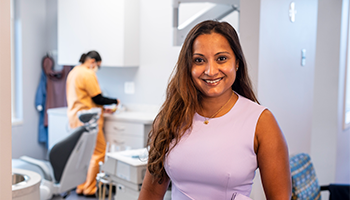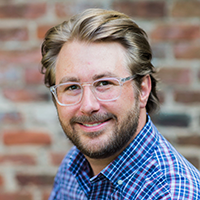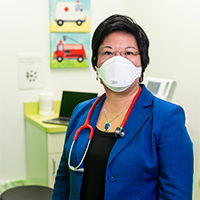Physician, heal thyself
Health care providers write prescriptions for business recovery
Physician, heal thyself
Health care providers write prescriptions for business recovery
After the pandemic locked down businesses in mid-March, Dr. Frank Iuorno and his seven employees at West End Orthodontics in Glen Allen busied themselves with what he calls “housekeeping stuff.”
Like most dental and medical primary care practices, West End Orthodontics faced many challenges due to the pandemic, ranging from securing funding to stay afloat during the lockdown to finding ways to make his patients feel safe and comfortable to return for care.
First, Iuorno says, he was “bound and determined” to keep his staff employed and, with the help of creative workarounds and a Small Business Administration (SBA) Paycheck Protection Program (PPP) loan, “we weathered that storm pretty well.”
West End Orthodontics reopened in May after Gov. Ralph Northam lifted restrictions for dentists. By the first week of July, Iuorno says, the practice was back to 80% to 90% of normal patient volume.
It now has a new look and feel, designed to keep both staff and patients safe. “There’s a whole new set of forms and systems to screen patients and to keep the reception area clear,” says Iuorno, president of the Virginia Dental Association. His team produced a video to instruct patients about what all these revamped procedures look like. The video includes a scene of one staff member sitting in a car pretending to be a patient, talking by phone, getting instructions.
Getting the staff to feel comfortable with the changes was initially more difficult than gaining patients’ acceptance, he says, but he believes that having a small practice made it a little easier. “Getting buy-in from seven or eight people is one thing. It would be hard with 50.”
All of these revised safety features are critical, Iuorno notes, but he misses the in-person interaction.
“I do an adjustment and then go meet with Mom or Dad out in the car” for a quick meeting, he says. “I do a lot of phone calling.” He also performed some teledentistry but allows that “there’s not a lot that can be done” that way, other than monitoring a patient.
Receiving a PPP loan “was integral to keeping my employees on payroll and employed during our six-week shutdown,” Iuorno says. “Without the loan, I would have had to furlough nearly all employees, and as it stood, we were able to keep everyone off of unemployment.” He plans to apply for loan forgiveness once the protocol has been worked out.

Dr. Dipa Patel, an oral surgeon who is a past president of the Virginia Society of Oral and Maxillofacial Surgeons, also credits PPP with saving her business. An estimated 5.2 million loans were approved around the country under the SBA program, which was set up to provide emergency relief assistance for small businesses to keep their workers on the payroll.
Patel’s practice in Arlington was shut down for six weeks, except for emergencies, and her office in Washington was closed an additional two weeks. She describes a roller coaster of financial ups and downs since reopening. Business in “May was at about 50%. June was practically a regular month. … July was down to 60%. August was at 80% to 90%. September has been quiet, with lots of people rescheduling.”
Patel employs four people and says, “PPP was a lifeline. It helped me retain my employees and it allowed us to continue rent payments while we had no revenue.” She also plans to apply for loan forgiveness.
Dr. Barrett W.R. Peters, immediate past president of the Virginia Academy of Pediatric Dentistry, says, “We came up with a completely new protocol” to protect both patients and staff at his specialty pediatric dentistry practice in Charlottesville and its satellite office in Waynesboro. “We changed procedures,” he says. “We chose to put in hospital-grade air filtration. We use more PPE [personal protection equipment].”
He adds that PPP helped cover payroll, rents, “exorbitant PPE costs,” and other increased office overhead due to COVID-19.

“Now we’re close to 90% [volume] but it’s time-consuming and exhausting to get the same thing done. Most people have been very respectful and receptive.”
Economic remedies
Virginia medical practices also benefited greatly from the loan program, according to Dr. Clifford Deal, immediate past president of the Medical Society of Virginia (MSV). “PPP saved everybody. Everybody I talked to said so.”
A Medical Group Management Association survey found that 97% of physician practices had lost money by April due to the pandemic, and nearly half had furloughed employees. As of mid-September, Deal estimated that most Virginia medical practices were running at full volume or close to it. He adds that the size of the practice matters. “Large practices have pivoted much more easily than small practices.”
Dr. Sandy Chung is CEO of Trusted Doctors, a large pediatrics management services organization in Northern Virginia, and president of Fairfax Pediatric Associates. The volume of patients at her pediatrics practice dropped below 50% during the early months of the lockdown but she estimates that it had risen to about 80% by early October.
However, she sees a number of practices where physicians are still taking pay cuts and some people remain furloughed. “I think some will be permanent. Practices can’t afford to rehire everyone.”
Pediatric practices are especially hard hit because “parents are still afraid to be out with their children,” says Chung, immediate past president of the Virginia Chapter of the American Academy of Pediatrics. That’s obviously a business concern, but it also brings up health concerns, she adds: “We’re worried about children’s vaccination schedules and developmental issues.”

To raise patient volume back to pre-pandemic levels, health practitioners need to explore ways to make patients feel safer, Chung says. For example, “to minimize the number of people who are inside an office, a local van can go to homes or you can have curbside service for checkups.”
Hospitals also were hit hard by the pandemic’s lockdowns and economic crisis. Hospital patient volumes and resulting revenue dropped substantially at the onset of the pandemic and didn’t bounce back to expected levels once restrictions were lifted, according to Chicago-based consulting firm Crowe Revenue Cycle Analytics. Even with elective medical procedures resuming, Crowe reports the average U.S. hospital was down $56.3 million of net patient service revenue (annualized) due to COVID-19 as of mid-August.
Norfolk-based Sentara Healthcare, which operates in Virginia and North Carolina, declined to about 50% of patient volume but had returned to “about 92% of our normal clinical activity” by mid-September, according to COO Michael Gentry. “Outpatient care is now north of 95%. It’s not fully recovered, but very close.”
Bon Secours, in Hampton Roads and Richmond, is also on the road to recovery, according to Dr. Douglas Apple, chief clinical officer for Bon Secours Mercy Health’s Atlantic Group, based in Cincinnati. “Ambulatory care rebounded fairly quickly. We’re doing fairly well with that.”
It helped to be part of a larger system, Apple added, because Bon Secours hospitals in Virginia could learn from sister hospitals in other states. “We had a little bit of a lag time. Youngstown, Ohio, was hit hard. We were able to learn from that; it allowed us to adjust.”
An important factor in bringing back ambulatory care and outpatient services was putting screening programs in place and separating out coronavirus cases, Apple says. “Red” clinics were set up for COVID-related care and “green” clinics were set up for other care.
“We started looking at visitation. Who should be at the bedside? We needed to manage traffic flow. We reconverted spaces; conference rooms were turned into waiting rooms,” he says. “We made sure everyone understood the processes and that we answered their questions about safety.”
Take two aspirin and Zoom me
One small bright spot from the lockdown, according to Apple and other health care practitioners, is the increased use of telemedicine.
“We have seen a significant increase in televisits, and it’s not just for things that are COVID-related,” Apple says.
With telemonitoring tools, patients can have their vital signs — such as weight, blood pressure and blood sugar — checked while they remain at home. Health care providers can interact with patients and even diagnose diseases from a distance.
Also, he notes, “prescriptions used to require a doctor’s visit. Now people can use telehealth.” That change is popular with patients, too. Doctors.com reports that 93% of patients surveyed “would be likely to use telemedicine to get prescriptions filled or to learn more about their prescriptions from their doctors.”
Doctors.com also found that 91% of those surveyed said telemedicine would assist them with setting up appointments and following treatment regimens.
That may help with preventive care, which Apple says still is lagging. “I have concerns we have not gotten where we need to be. We’re still seeing delayed care in areas such as diabetes, hypertension. We don’t see the same number of visits. A lot of patients [are] not receiving regular care. How do we get back to what is normal for us?”
At Sentara, “a different way to care for COVID patients” was established to provide a safer environment, according to Gentry. “Usually you want human-to-human interaction, but we set up visits that were longer but less frequent and included fewer people. Staff members were in a room for longer periods of time, doing a wider variety of tasks.” That means that fewer staff members are exposed and they don’t need to use as much personal protection equipment, which remains in short supply.
It’s important not only to implement safety procedures but to communicate those procedures to employees and to potential patients who may not be seeking non-emergency care because they’re afraid of potentially exposing themselves to the coronavirus, Gentry says. “The comparison I make is, you’re walking down the street at night — do you feel safe or are you actually safe? For employee team members and the community, we want both. It’s more difficult to get that feeling of safety.”
!


















